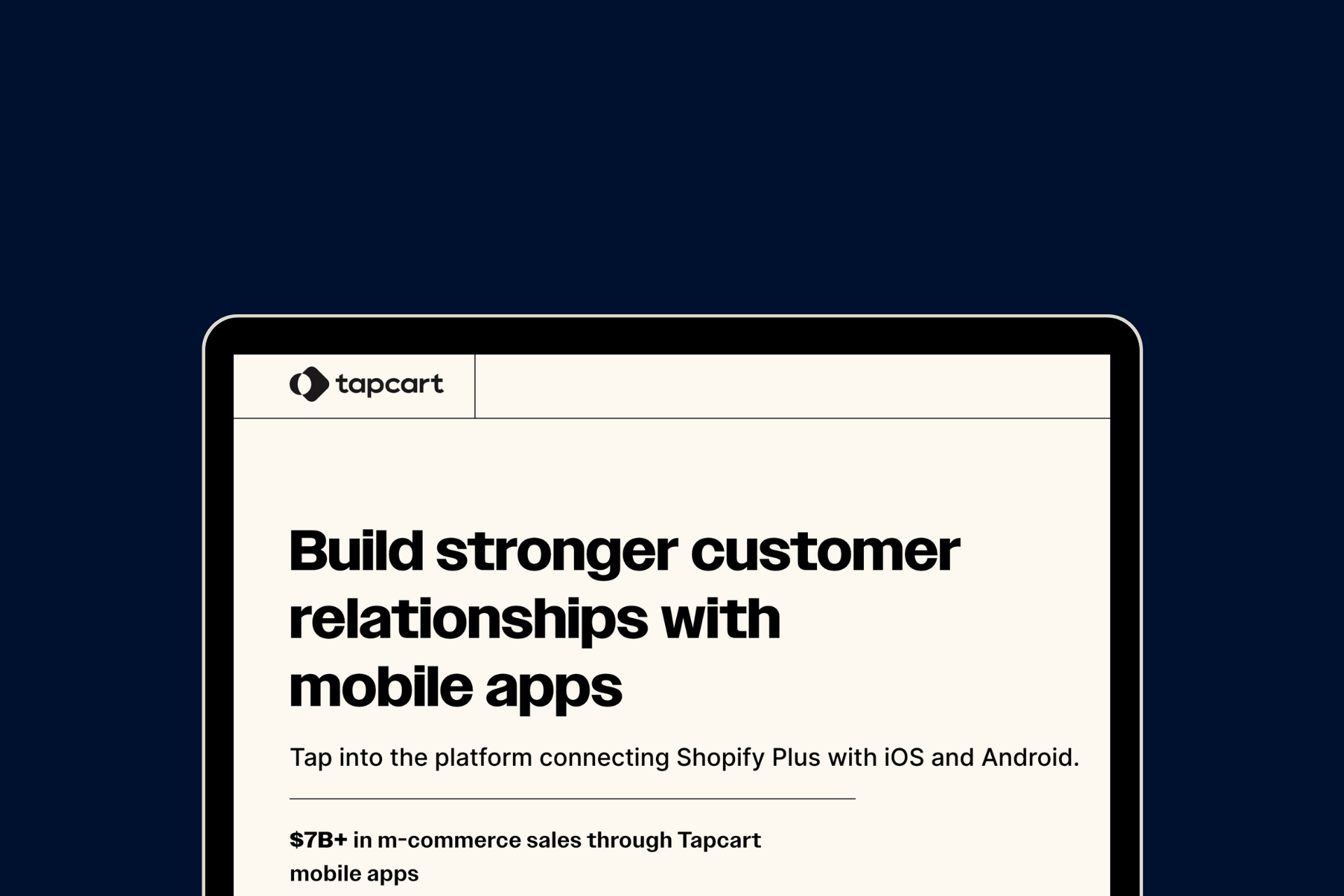In this blog, we will explore the transformative potential of Shopify Commerce Components and delve into the boundless opportunities they unlock for the future of enterprise retail.
Over the last decade, enterprise e-commerce has witnessed a significant surge in the adoption of headless and composable systems. Embracing headless architecture has empowered businesses to harness the advantages of crafting and overseeing their custom commerce applications. Yet, this shift comes with its own set of considerations and limitations.
Acknowledging these challenges, Shopify Plus has unveiled an innovative solution: Commerce Components. This cutting-edge, composable stack has been designed to address the complexities of enterprise retail, offering brands the freedom to handpick and seamlessly integrate Shopify's modular components with their existing services, all while building on any preferred front-end framework.
With Commerce Components, Shopify leads the charge in shaping the future of headless commerce for enterprises, fostering unparalleled flexibility and growth potential. And brands like Mattel, Glossier, Coty, Steve Madden, Spanx, JB Hi-Fi, and Staple are already leveraging its advantages.
What is Composable Commerce?
Composable Commerce is a modern approach to eCommerce that emphasizes flexibility and customization.
In Composable Commerce, various aspects of an online store, like product catalog, payment processing, and checkout, are treated as separate, independent building blocks or "components." These components can be easily combined, mixed, and matched to create a tailored eCommerce solution that meets specific business needs.
This modular architecture allows businesses to choose the best-of-breed components and integrate them seamlessly, enabling faster development, scalability, and future adaptability. With Composable Commerce, merchants have the freedom to create a unique and agile online shopping experience that aligns perfectly with their brand and customer expectations.
The Rise of Composable Commerce
The world of commerce is constantly evolving, and to keep up with the changing landscape, a new approach has emerged: composable commerce. But why is this approach gaining momentum?
- Need for speed, flexibility, and scalability: In today's fast-paced business environment, companies need to stay agile and continuously innovate to stay ahead of the competition. However, traditional architectures often struggle to keep up with the rapid pace of innovation.
- A modular approach to e-commerce: A one-size-fits-all approach no longer suffices. Companies now demand the ability to mix and match different components from various providers or build customized solutions effortlessly to meet their unique needs.
- Rise of the Software as a Service (SaaS) model: Leveraging the power of SaaS across their entire platform architecture has become a top priority for companies. This model offers benefits like easier upgrades and maintenance, as well as the ability to implement significant server changes with minimal disruptions.
- Cloud-native architecture: To ensure seamless scalability and flexibility, businesses increasingly adopt cloud-native architectures. Whether applications are running in the cloud or on-premises, the ability to quickly scale up or down as required is crucial.
Composable Commerce vs. Headless Commerce
As the eCommerce landscape evolves, new architectural paradigms have emerged to cater to the growing demands of businesses and customers. Two such approaches that have gained significant attention are Composable Commerce and Headless Commerce. Both offer unique advantages and cater to different needs. Let's explore the differences and benefits of Composable Commerce and Headless Commerce in the context of Shopify:
Composable Commerce:
- Modular Architecture: Composable Commerce follows a modular approach, where various business capabilities (such as catalog management, checkout, payments, etc.) are treated as separate, interoperable components or microservices.
- Customizable and Agile: With Composable Commerce, businesses can easily customize and combine different components to create a tailored eCommerce solution that aligns precisely with their requirements. This level of flexibility enables agile development and faster time-to-market.
- Third-party Integration: Composable Commerce allows easy integration with third-party applications and services, giving merchants access to a wide array of specialized tools and functionalities.
- Scalability and Performance: Since each component in Composable Commerce is decoupled, it allows for scalability and performance optimization on a granular level. Businesses can scale individual components based on demand without affecting the entire system.
- Vendor Independence: Composable Commerce enables businesses to work with multiple vendors for different components, reducing dependency on a single vendor and facilitating negotiations for competitive pricing.
- Future-Proofing: As the eCommerce landscape evolves, Composable Commerce offers the flexibility to adopt new technologies and components easily, ensuring a future-proof eCommerce infrastructure.
Headless Commerce:
- Decoupled Frontend and Backend: In Headless Commerce, the front and backend of the eCommerce platform are decoupled, allowing merchants to use different technologies for each. This enables front-end developers to create immersive, unique user experiences without constraints.
- Enhanced User Experience: Headless Commerce allows for dynamic and interactive user interfaces, as frontend developers can use modern technologies like React, Vue.js, or Angular to build highly engaging storefronts.
- Omnichannel Experience: Headless Commerce facilitates the delivery of consistent shopping experiences across multiple channels and devices, including web, mobile, social media, and IoT devices.
- Faster Development: Since frontend and backend development can proceed independently in Headless Commerce, it accelerates development cycles and enables faster updates and changes to the storefront.
- Personalization and A/B Testing: Headless Commerce makes it easier to implement personalization and conduct A/B testing, enhancing the overall customer experience and optimizing conversion rates.
- Integration Flexibility: With a headless approach, businesses can integrate various marketing, analytics, and customer service tools, ensuring a seamless customer journey and comprehensive data insights.
Composable Commerce vs Headless Commerce: Choosing the Right Approach
- Business Goals: Composable Commerce is well-suited for businesses looking for a highly customizable, modular, and scalable solution. Headless Commerce, on the other hand, is ideal for those prioritizing cutting-edge user experiences and omnichannel presence.
- Development Expertise: Composable Commerce may require more backend development expertise to manage various components, while Headless Commerce necessitates proficient frontend development skills.
- Budget and Timeline: Composable Commerce may have a longer initial development timeline due to component integration, while Headless Commerce can lead to faster front-end development and quicker updates.
What are Shopify Commerce Components?
There are over 30 modular components included in the Shopify Commerce Components today.
These components are not only incredibly versatile but also seamlessly integrate with third-party services, unlocking new dimensions of functionality for your online store. What's even more exciting is the extensibility of these components that can be tailored to suit your specific business needs effortlessly.
Although it is still in its early stages, the Shopify team is excited to unveil the incredible tools they have developed to assist developers in building their custom selection of components. These tools are specifically designed to seamlessly integrate with your existing stack, ensuring a smooth and effortless integration process.
However, no matter which components you choose, you can rest assured that you will always have access to the powerful Shopify Checkout feature.
Commerce Components Currently Available
Commerce Components encompass a comprehensive set of tools, including APIs, SDKs, and integrations, designed to empower you in constructing a streamlined and effective commerce solution tailored to your business needs.
At present, the Commerce Components consist of five distinct categories:
- Storefront: This category provides APIs dedicated to constructing a headless frontend experience, allowing you to create a flexible and customizable user interface for your commerce platform.
- Cart/Checkout: Within this category, you'll find APIs that facilitate the management of payment information, enabling smooth and secure transactions for your customers during the checkout process.
- Core Commerce: These APIs focus on product creation and management, featuring support for multiple data models, ensuring your products are efficiently organized and presented.
- Data & Compliance: This component category offers essential solutions to address customer data privacy concerns, including compliance with regulations such as GDPR (General Data Protection Regulation), allowing you to build trust with your customers.
- Shipping & Logistics: Here, you'll find solutions that revolve around shipping and logistics, with APIs that seamlessly integrate shipping labels, streamlining the order fulfillment process.
By leveraging these Commerce Components, you can forge a powerful and cohesive commerce ecosystem to enhance your business operations and deliver a seamless shopping experience.
Commerce Components vs. Shopify Plus
Shopify Plus offers a comprehensive all-in-one solution designed for digital-first brands, providing them with a complete set of features and tools. In contrast, Commerce Components present a collection of modular options specifically catered to enterprise retailers. These modules allow them to create customized experiences and seamlessly integrate them into their existing commerce infrastructure, providing a flexible and tailored approach to meet their unique needs.
Pricing
Shopify Plus follows a standard pricing model, which includes a 0.4% variable fee, with a 0.15% discount when using Shopify Payments, and a minimum monthly fee of $2,000 USD.
On the other hand, Commerce Components offer a tailored pricing structure that is based on usage and the specific components chosen by retailers, following four core principles:
- Modular: Retailers are billed only for the components they opt to use, providing flexibility and cost control.
- Based on Usage Tiers: Pricing for each component is determined by the retailer's actual usage of that component, with unit costs decreasing as usage increases, ensuring fair and scalable pricing.
- Predictability: The pricing structure is designed for annual commitments, giving retailers clarity and certainty about their expenses.
- Bundle Discounting: Retailers can avail themselves of increasing discounts as they commit to more components, encouraging them to embrace a comprehensive and integrated solution.
This approach ensures that retailers have a cost-effective and tailored pricing model that suits their specific requirements and usage patterns.
Support
Shopify Plus merchants receive comprehensive assistance from a designated Customer Success Manager, along with specialized launch support.
On the other hand, Commerce Component retailers will gain exclusive access to Shopify Professional Services, which include top-tier service level agreements (SLAs) tailored for enterprise-level needs.
Additionally, they will have the privilege of having a dedicated account team at their disposal, providing round-the-clock priority support, and ensuring their business is well-supported at all times.
Features
While Shopify Plus already boasts well-defined features and functionality, there are even more advancements scheduled for 2023.
On the other hand, Commerce Components are readily equipped with various benefits, including no API limits, the capability for 40,000 checkouts per minute per store (as opposed to 15,000), expanded product variant limits, exciting new third-party technology partnerships, and an admin experience thoughtfully tailored to cater to enterprise workflows.
Time to launch
The time required for the launch will heavily depend on the specific needs of the retailer. On average, we anticipate it to take multiple months. However, it's important to note that Commerce Components implementations may take longer compared to the typical launch timeline for Shopify Plus.
Wrapping up!
In conclusion, Shopify Commerce Components emerge as the definitive gateway to the future of enterprise retail.
With an array of powerful APIs, SDKs, and integrations, these components bestow unmatched flexibility and scalability upon retailers, empowering them to craft bespoke commerce solutions tailored precisely to their business needs. The modular approach ensures cost-effectiveness, allowing retailers to invest in only the functionalities they require while benefiting from predictable and tiered pricing structures. As the retail landscape evolves rapidly, Commerce Components stand as the epitome of adaptability, enabling seamless integration with cutting-edge third-party technologies and fostering continuous growth and innovation.
Embracing Shopify Commerce Components signals a transformative shift for enterprise retailers, propelling them to thrive in a dynamic digital marketplace and unlock new horizons of success. The future of enterprise retail beckons, and with Commerce Components, the possibilities are boundless.
Still confused and want expert guidance? Reach out to our Shopify experts today!




